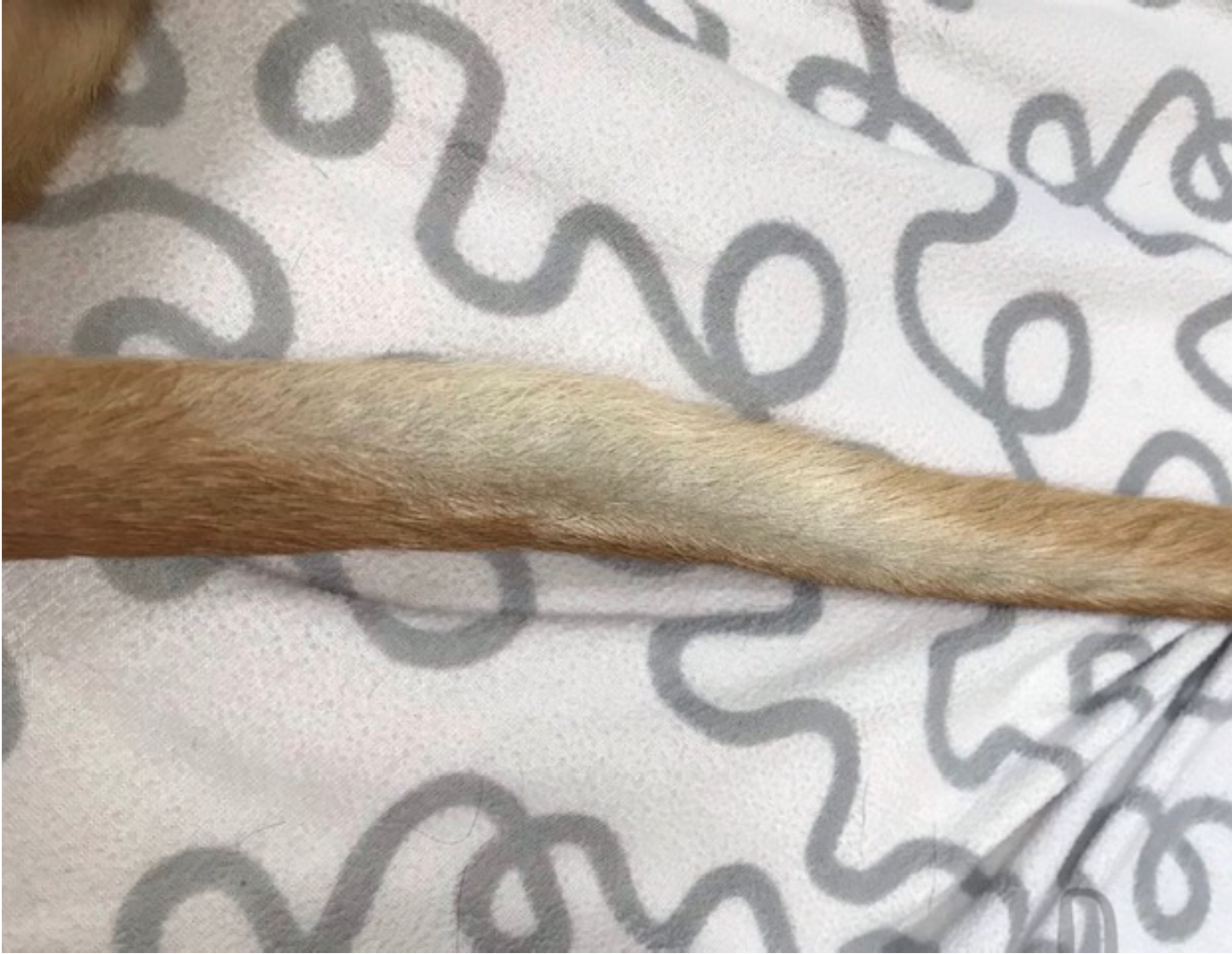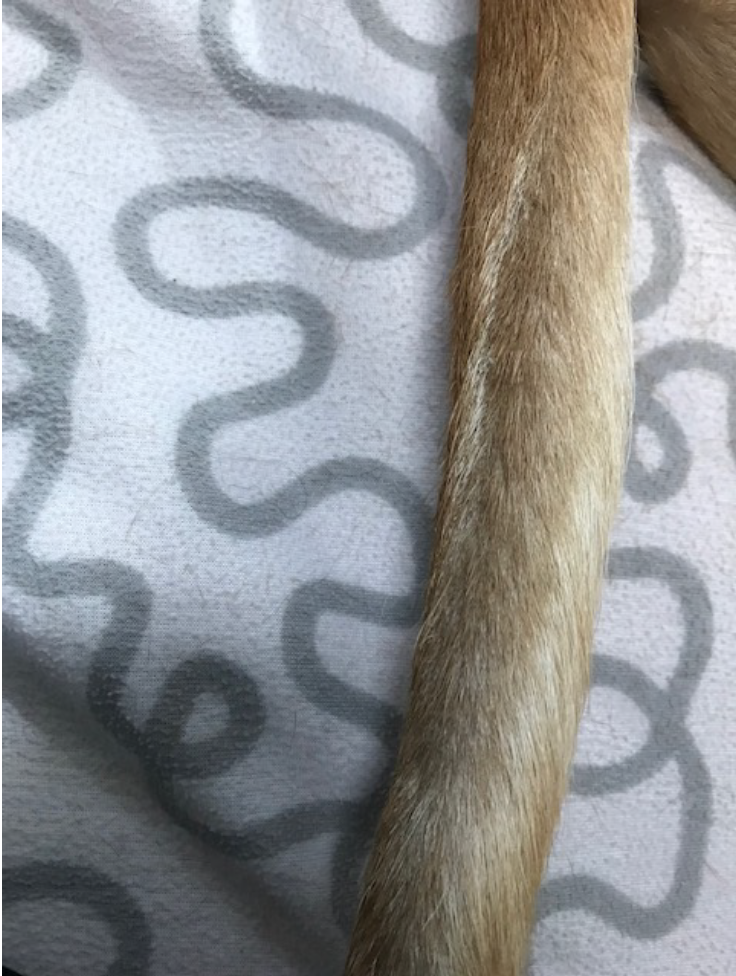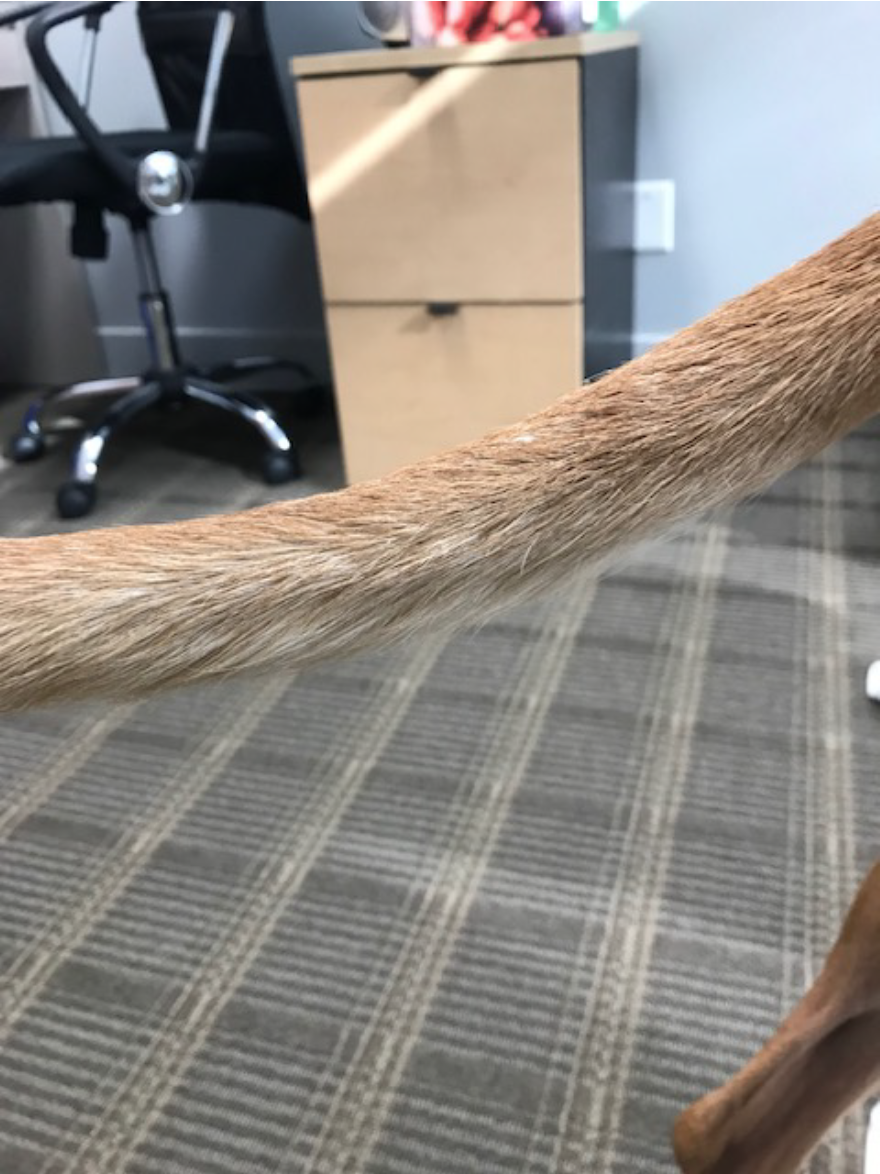| print
link to this post | email a friend A Tail to Tell05 Sep 2019 I recently treated a lovely, energetic 7-year-old Ibizan Hound. He initially came to The Canine Fitness Centre with complaints of soreness on right hip extension and lower rib issues. Upon assessment I noted he had tenderness in his thoracolumbar and lumbosacral regions (mid and lower back) and a right pelvic dysfunction. He presented with tight myofascial tissue (myofascial tissue underlying the skin that attaches to muscles, joints and organs) and restricted and tender tail mobility. I also noticed there was a bald patch of skin along his proximal tail, more predominant along the right side.
Overall, I noted the dog stood with his hind legs quite straight and tucked under him. The owner reported that he lacked a long stride in his running gait and wasn’t as playful with the other hounds in the household. My physical diagnosis was that this sweet boy was suffering from a few levels of joint dysfunctions along his spine (namely thoracic joints T 11-13 and the lumbosacral area L 5 - S 1), his right pelvis was hypomobile and elevated and in general he had tight myofascial tissue along his mid to lower back. This tight connective tissue in our bodies can restrict the flow of circulation and restrict the mobility of nerve tissue that exits our spine and travels to our extremities.
We agreed upon some treatment that included manual therapy to mobilize spinal, pelvic, and rib joints, soft tissue release to the myofascia and surrounding musculature, gentle tail mobility to increase neurovascular circulation and mobility through the lower body, laser to the lumbosacral joints and nerve roots, and PEMF therapy. We incorporated some home exercises of stretching, skin lifts, gentle tail traction and strengthening activities.
Within three sessions over a one month period, the owner reported a whole new energy and playfulness towards people and the other dogs! Furthermore, we started noticing some hair growth return along his tail! After 2 months, his tail growth became completely full with no patches of baldness.
Nerve roots that exit the spinal cord between the vertebrae are responsible for motor function (strength), sensory function (pain, numbness, tingling) and autonomic nervous system functions (hair growth, nail health, organ function). The lumbosacral plexus is a nerve root bundle made up from the fourth through seventh lumbar levels and all the sacral nerves. Issues of compression or degenerative disc disease to any of these levels may cause signs of motor, sensory, or autonomic abnormalities in the pelvic areas, hind limbs or tail region.
The first sign of nerve root dysfunction is a loss of proprioception (body awareness). This may present as a loss of balance, change in gait or a lack of ease of movement in a joint or limb. Later signs may be muscle tension – tight muscles that begin to restrict our range of motion in certain joints. Pain has been shown to be the last sign of nerve root dysfunction. These are the more obvious signs of licking, chewing, limping, whining, or yelping upon certain movements. As nerve roots are responsible for our autonomic nervous system as well – there may changes in hair loss, redness, hot spots, or nail bed changes that develop over time.
There are of course other issues that may cause hair loss, licking or chewing. There may be environmental, flea or food allergies, hormonal conditions (hypothyroidism), or anxiety/behavioural issues. It is important to follow up with your vet to rule out or manage these possible problems. However, if all those tests are cleared – keep in mind the musculoskeletal factors that can be at play!
Jennifer Gordon (BScPT, CCRT) Physiotherapist and Certified Canine Rehab Therapist
|

|



